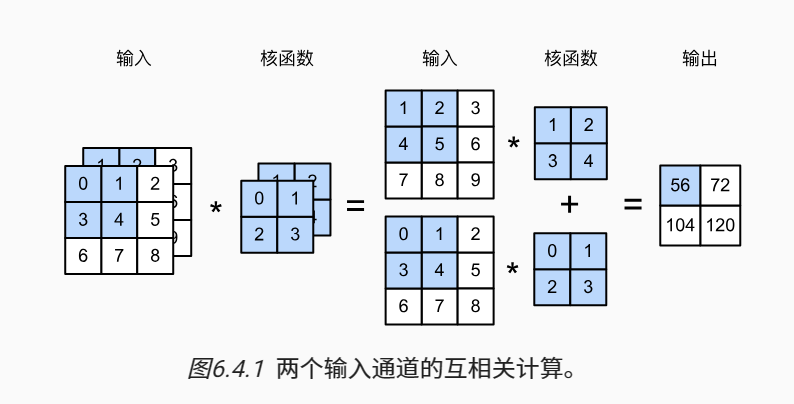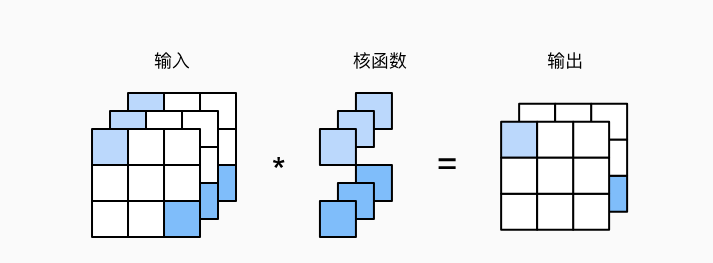
import torch
from d2l import torch as d2l
# 多输入通道的互相关运算
def corr2d_multi_in(X, K):
# 先遍历X和K的第0个维度(通道维度), 再把它们加载一起
return sum(d2l.corr2d(x, k) for x, k in zip(X, K))
X = torch.tensor(
[[[0.0, 1.0, 2.0], [3.0, 4.0, 5.0], [6.0, 7.0, 8.0]], [[1.0, 2.0, 3.0], [4.0, 5.0, 6.0], [7.0, 8.0, 9.0]]])
K = torch.tensor([[[0.0, 1.0], [2.0, 3.0]], [[1.0, 2.0], [3.0, 4.0]]])
print(corr2d_multi_in(X, K))
# 计算多个通道的输出的互相关函数
def corr2d_multi_in_out(X, K):
return torch.stack([corr2d_multi_in(X, k) for k in K], 0)
K = torch.stack((K, K + 1, K + 2), 0)
print(K)
print(corr2d_multi_in_out(X, K))

# 1x1卷积
def corr2d_multi_in_out_1x1(X, K):
c_i, h, w = X.shape # 输入通道数
c_o = K.shape[0] # 输出通道数
X = X.reshape(c_i, h * w)
K = K.reshape(c_o, c_i)
# 全连接层中的矩阵乘法
Y = torch.matmul(K, X)
return Y.reshape(c_o, h, w)
X = torch.normal(0, 1, (3, 3, 3))
K = torch.normal(0, 1, (2, 3, 1, 1))
Y1 = corr2d_multi_in_out_1x1(X, K)
Y2 = corr2d_multi_in_out(X, K)
assert float(torch.abs(Y1 - Y2).sum()) < 1e-6

